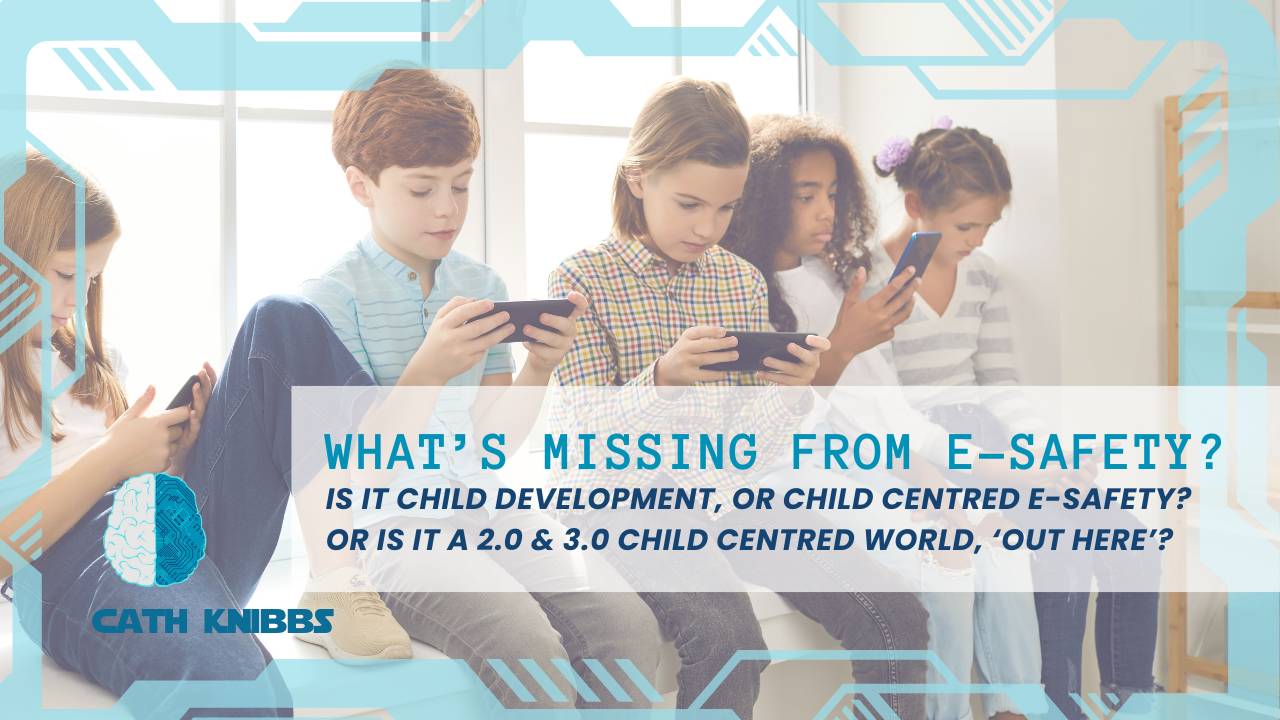What’s missing from e-safety? Is it Child Development? Or Child centred e-safety?
Feb 05, 2025
What’s missing from e-safety? Is it Child Development? Or Child centred e-safety? Or is it a child centred world, ‘out here’?
No this newsletter is not an attack on e-safety trainers or people who work in this sector, this is a reflection on what happens when I work with professionals who support children in settings such as counselling, social work, early help, victim support, emergency care and policing. This is about the space of understanding the why of behaviour and how we can help children discover their autonomy and agency and empower them to have ‘safer’ interactions in the digital, online and technology space (whatever safer means in practice).
I have been watching for the last 15 years the landscape of training around the safety of children online and how this often comes up in the setting that support children where the professionals dealing with a child deal with the presentation or the symptom and not the underlying cause.
In medicine this a symptom management response (medicine 2.0) and in (medicine 3.0) health care, you discover the root causes and utilise preventative measures.
Sadly we are fighting diseases of the human online with reactive symptom management and not necessarily micro to macro thinking. So, what is this Cath? This all sounds fancy smancy psychobabble?
Well, this means we take a child development approach to e-safety. No I’m not talking about the pop cyberpsychologist approach or celeb expert or social butterfly influencer claiming to know how they understand children, or the *‘online’ space*, but the grounded in theory and research approach to translating what we do ‘out here’ to ‘in there’. I have met several people in the e-safety space who take as much time as they can to learn about this way of working with children and apply it to the lessons they teach in schools for example. Yet this is not the norm.
Why? Because perhaps the landscape right now is to finger point, humiliate and shame and shock and awe children in the same way many (but not all) education settings do in terms of “bums on seats and be a good pupil now or its off to the punishment block for you!”
Why are children not becoming good ‘online citizens’ when we are not really creating a society of good citizens overall. Is this an issue that occurs online only and what is it that we are missing ‘out here’ to translate to ‘in there’. This is a larger macro question and one that is being addressed in spaces that use terms like ‘aware’ and ‘informed’.
However as I say in training and openly on social media, being informed about the weather doesn’t mean you change it, but it allows you to predict when you need a brolly or sunscreen and that is reactive (2.0) not preventative (3.0).
How do we get E-safety 3.0 AND 2.0 as we need both? You learn about children as human beings, with accurate and robust theories of all of the following; development from conception onwards, trauma, attachment, social, emotional and cognitive aspects of growth and development, ecological, societal and cultural development, neuroscience (not the stuff naming ‘dopamine’ circuits in isolation) and how this relates to all of the above disciplines and you take into account what empathy, autonomy, belonging and cohesion and needs driven human behaviours have to do with all of this.
In the space of consciously competent, humanistic and temporal approaches. Which pretty much means you become an expert of children, deeply and with a lens of here and now applies to the content of digital spaces.
Easy!
And if you're not sure how to do this, check out some of my books or trainings and or book me for a consultation.
*I have seen people claiming to understand this infinitesimal ’space’ - I am impressed!

